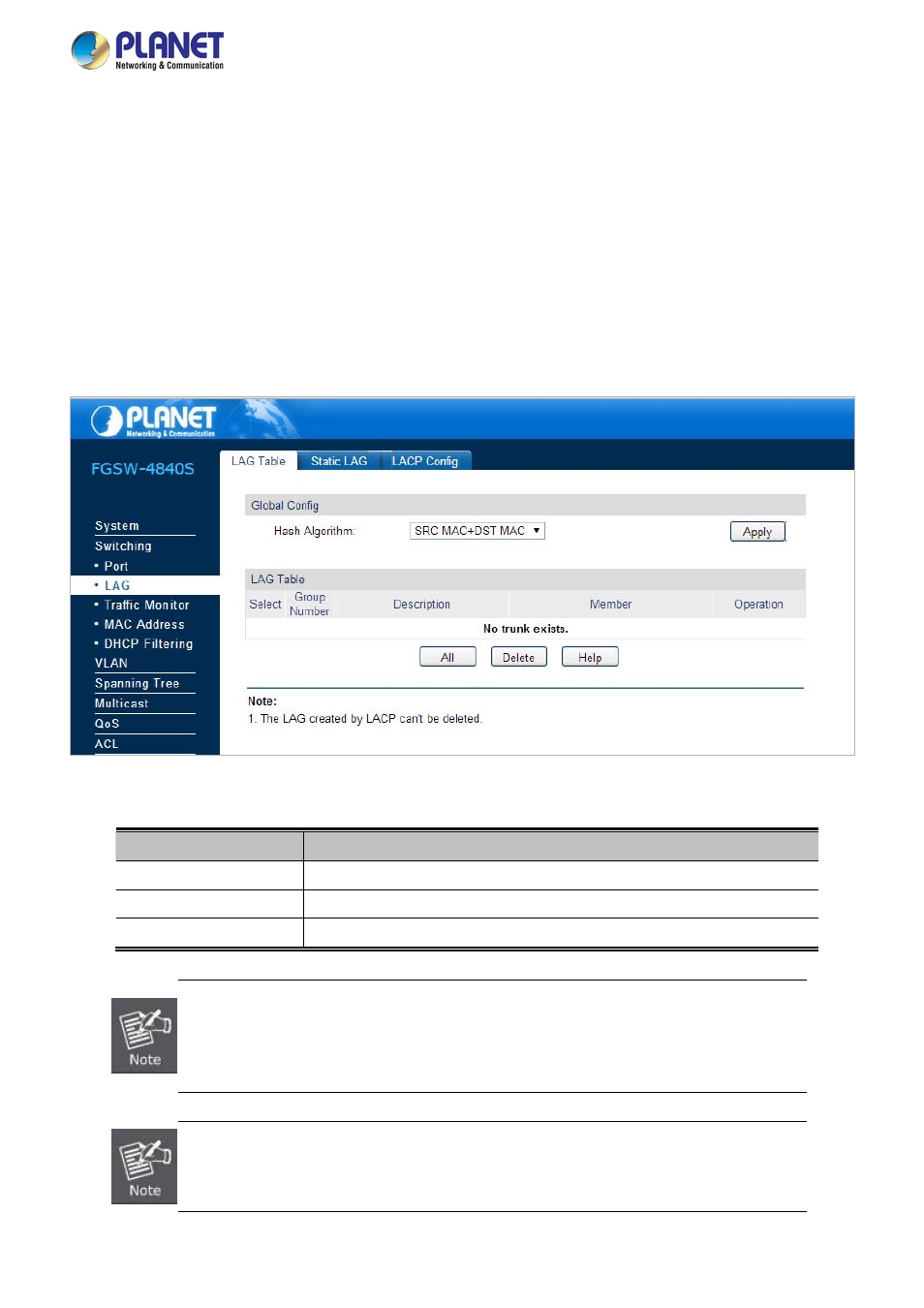2 lag – PLANET FGSW-2840 User Manual
Page 74

User’s Manual of FGSW-2840 / FGSW-4840S
4.3.2 LAG
LAG (Link Aggregation Group) is to combine a number of ports together to make a single high-bandwidth data path, so as to
implement the traffic load sharing among the member ports in the group and to enhance the connection reliability.
For the member ports in an aggregation group, their basic configuration must be the same. The basic configuration includes
STP
, QoS, VLAN, port attributes, MAC Address Learning mode and other associated settings. Further explanations are as
follows:
If the ports, which are enabled for the 802.1Q VLAN, STP, QoS and Port Configuration (Speed and Duplex, Flow
Control
), are in a LAG, their configurations should be the same.
The ports, which are enabled for the Port Security, Port Mirror and MAC Address Filtering, cannot be added to the
LAG.
If the LAG is needed, suggest to configure the LAG function here before configuring the other functions for the member ports.
The screen in
Figure 4-3-9
appears.
Figure 4-3-9:
LAG Page Screenshot
The page includes the following fields:
Object
Description
View the LAG Table on this page.
LAG Table
Static LAG
Configure the static link aggregation function of the Managed Switch on this page.
LACP Config
Configure the LACP function of the Managed Switch on this page.
Calculate the bandwidth for a LAG: If a LAG consists of the four ports in the speed of 1000Mbps full
duplex, the whole bandwidth of the LAG is up to 8000Mbps (2000Mbps x 4) because the bandwidth
of each member port is 2000Mbps counting the up-linked speed of 1000Mbps and the down-linked
speed of 1000Mbps.
The traffic load of the LAG will be balanced among the ports according to the Aggregate Arithmetic.
If the connections of one or several ports are broken, the traffic of these ports will be transmitted on
the normal ports, so as to guarantee the connection reliability.
74
